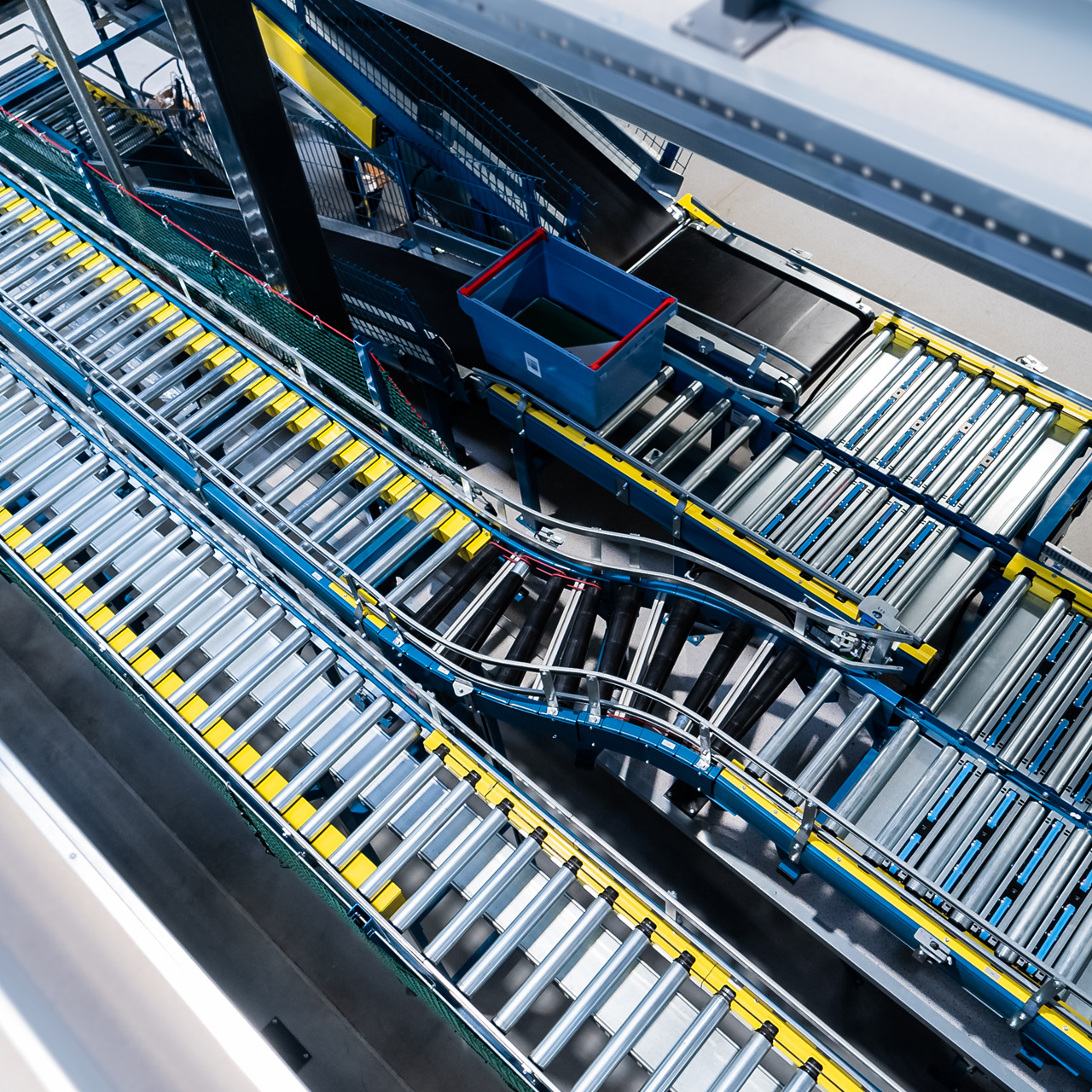Warehouse of the Future

We can predict, with little risk of error, that warehouses of the future will be 100% automated. Collection and deployment of goods, completion of orders and their delivery – all these processes will be carried out by machines. This is one development model, involving the construction of warehouses from scratch, which will resemble giant machines for storing and managing the circulation of goods. The second, complementary path is related to the development of AGV robots.
Futurology has made such numerous and such spectacular mistakes that it’s no longer considered a science, but rather a part of pop culture – a kind of astrology for eggheads. This doesn’t prevent whole hosts of experts from spinning tales of the future, which are eagerly listened to, the more a field develops. And warehouses are a continuously developing field.
Speculation about the future of warehouses
Storage and shipping industries are growing at a dizzying pace. The major contributor is the explosive growth of the e-commerce industry. The need to continuously reduce the time elapsed from placing an order to the delivery of goods forces far-reaching modernisations of storage solutions.
Experts predicting the future promise a great invasion of industrial robots and widespread automation, which will include warehouses as well. Whether the visions of floating, flying, seabed, underground or skyscraper warehouses come true, there is agreement on one thing: people will leave warehouses. Forecast authors often refer to the example of agriculture mechanisation in the USA: over 40% of the population was involved in farming before the widespread introduction of machines – currently it’s only 2%. The same is to happen in all industries where autonomous robots can be used – there is no doubt that this future awaits warehouses1 .
Intelligent robots (although not necessarily androids) will be involved in the storage of goods, and the completion, packaging and postage of orders. That’s not all: experts predict that in addition to the structure, location and the equipment itself, the functions of a warehouse could also change dramatically. In the future, warehouses will not only store goods, but also manufacture them. High hopes are placed on the development of 3D printing technology, which would allow to manufacture goods without creating stocks – precise amounts as ordered by the customer. It’s estimated that the printing of clothes, jewellery, toys, tools and even food will soon become a reality2.
Before tomorrow comes, or the era of AGV robots
Even if a fully automated, Artificial Intelligence-managed machine warehouse ultimately becomes the standard, there’s no doubt that the transition period will belong to AGV robots. Autonomous Guided Vehicle is a name used for various types of self-driving dollies that don’t require direct control but move independently, based on the identification of reference points in their surroundings. The best-performing solution is an electronic map of the warehouse, which becomes the point of reference for the robot’s movements. Using 3D scanning technology, the machine identifies obstacles and obtains data to create a map. After mapping a warehouse (or someplace different, e.g. a production hall), the robot can effortlessly determine the shortest route between two points (places where cargo is loaded and delivered).
“Autonomous transport robots, equipped with a terrain mapping system, don’t require modernising or building a warehouse from scratch, both of which come with huge costs,” says Mateusz Wiśniowski, VersaBox CTO. “Robots, such as our VERSABOT 500, adapt perfectly to already existing storage spaces. The only thing they need is a fairly even floor and time for their implementation.”
AGV robots are currently the most flexible and cost-effective form of internal transport automation in warehouses and production facilities. A great advantage of autonomous robots is also their ability to simply modify their tasks – change routes and adapt to transporting various types of goods. From an investor’s point of view, it’s also incredibly important that the system is easily scalable.
“Our customers usually start by implementing two or three robots,” Wiśniowski says. “Over time, they expand their fleet with more devices.”
AGV robots are a solution that will allow small and medium-sized companies to enter the era of universal automation. For many, it may be the only way not only to reduce labour costs, but to survive in a market where there may be a severe shortage of employees willing to undertake low-paid and arduous warehouse work.
1 Robots reduce costs, but reduce consumption, https://www.obserwatorfinansowy.pl/bez-kategorii/rotator/roboty-obnizaja-koszty-ale-zmniejszaja-tez-konsumpcje/ and to catch up with the world, we have to run twice as fast, https://www.obserwatorfinansowy.pl/tematyka/makroekonomia/trendy-gospodarcze/aby-dogonic-swiat-musimy-biec-dwa-razy-szybciej/
2 Future Talks, Episode 4: Warehouses of the future, https://humancentered.colliers.pl/video/future-talks-odc-4-magazyny-przyszlosci

